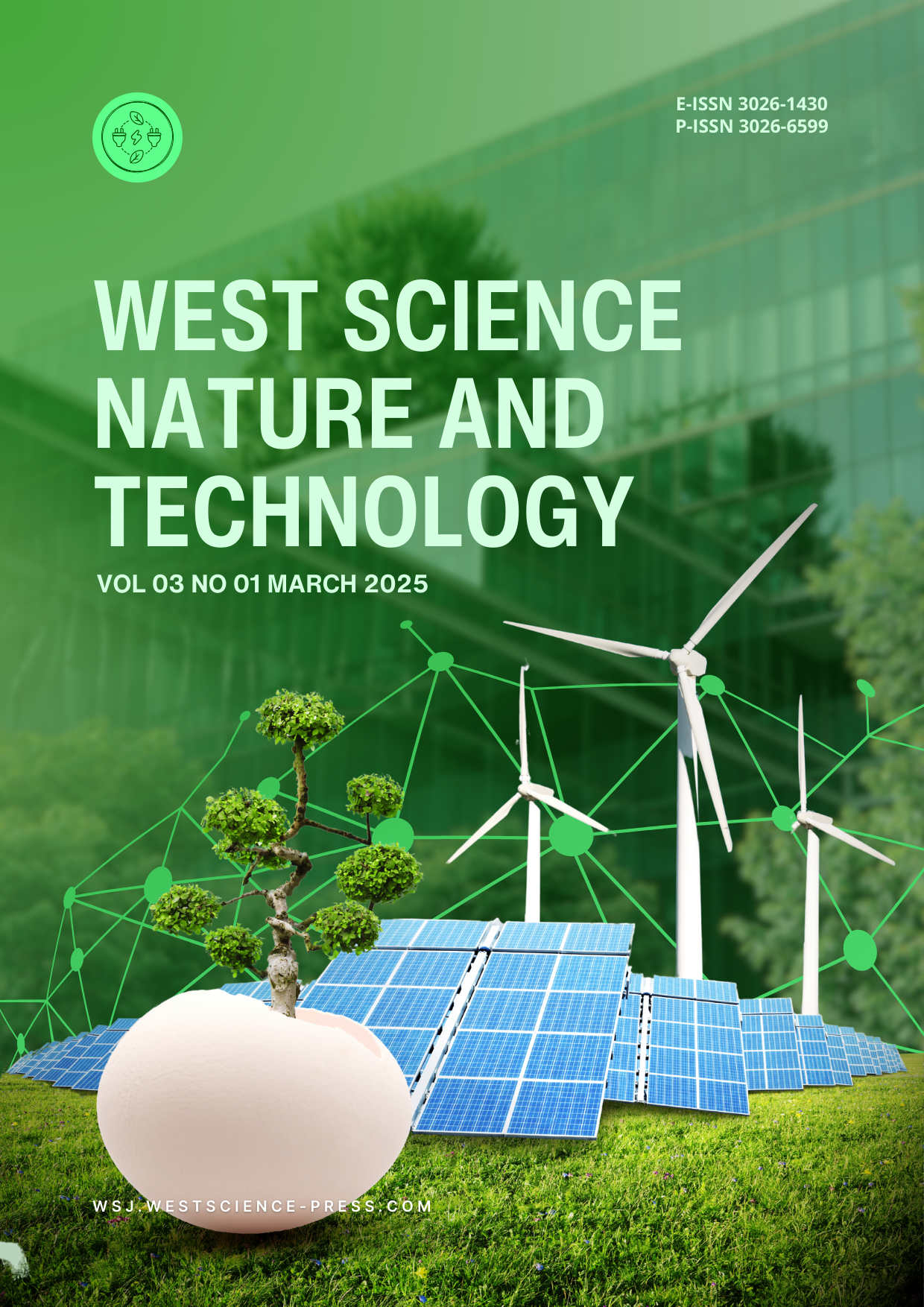Bibliometric Analysis of Electric Vehicle Adoption and Market Trends
DOI:
https://doi.org/10.58812/vjsmjp35Keywords:
Electric vehicles, Bibliometric analysis, EV adoption, Charging infrastructure, SustainabilityAbstract
The adoption of electric vehicles (EVs) has emerged as a crucial solution to reduce carbon emissions and enhance sustainable transportation. This study conducts a bibliometric analysis to examine research trends, influential authors, and thematic developments in EV adoption and market trends. Using Scopus as the data source and VOSviewer for analysis, this study identifies key research clusters, including consumer behavior, charging infrastructure, environmental impact, and technological advancements. The findings reveal a significant increase in EV-related research, particularly in recent years, with the United States, China, and India leading contributions. Keyword analysis highlights critical themes such as government policies, battery technology, and vehicle-to-grid integration. Despite progress, challenges such as high upfront costs, limited charging infrastructure, and regional disparities persist. The study suggests future research directions focusing on battery sustainability, AI-driven mobility solutions, and smart grid integration. This bibliometric analysis provides valuable insights for researchers, policymakers, and industry stakeholders, contributing to the advancement of electric mobility research.
References
[1] S. Vergis and B. Chen, “Comparison of plug-in electric vehicle adoption in the United States: A state by state approach,” Res. Transp. Econ., vol. 52, pp. 56–64, 2015.
[2] E. Purwanto and A. P. Irawan, “Bibliometric Analysis of Electric Vehicle Adoption Research: Trends, Implications, and Future Directions.,” Int. J. Saf. Secur. Eng., vol. 13, no. 5, 2023.
[3] S. Kim, J. Lee, and C. Lee, “Does driving range of electric vehicles influence electric vehicle adoption?,” Sustainability, vol. 9, no. 10, p. 1783, 2017.
[4] C. R. Forsythe, K. T. Gillingham, J. J. Michalek, and K. S. Whitefoot, “Technology advancement is driving electric vehicle adoption,” Proc. Natl. Acad. Sci., vol. 120, no. 23, p. e2219396120, 2023.
[5] Z. Chen, A. L. Carrel, C. Gore, and W. Shi, “Environmental and economic impact of electric vehicle adoption in the US,” Environ. Res. Lett., vol. 16, no. 4, p. 45011, 2021.
[6] A. Soltani-Sobh, K. Heaslip, A. Stevanovic, R. Bosworth, and D. Radivojevic, “Analysis of the electric vehicles adoption over the United States,” Transp. Res. procedia, vol. 22, pp. 203–212, 2017.
[7] I. Khusanboev, I. Yodgorov, and B. Karimov, “Advancing electric vehicle adoption: Insights from predictive analytics and market trends in sustainable transportation,” in Proceedings of the 7th International Conference on Future Networks and Distributed Systems, 2023, pp. 314–320.
[8] W. Sierzchula, S. Bakker, K. Maat, and B. Van Wee, “The influence of financial incentives and other socio-economic factors on electric vehicle adoption,” Energy Policy, vol. 68, pp. 183–194, 2014.
[9] M. F. Mekky and A. R. Collins, “The Impact of state policies on electric vehicle adoption-A panel data analysis,” Renew. Sustain. Energy Rev., vol. 191, p. 114014, 2024.
[10] D. V Pelegov and J. Pontes, “Main drivers of battery industry changes: Electric vehicles—A market overview,” Batteries, vol. 4, no. 4, p. 65, 2018.
[11] A. C. Mersky, F. Sprei, C. Samaras, and Z. S. Qian, “Effectiveness of incentives on electric vehicle adoption in Norway,” Transp. Res. Part D Transp. Environ., vol. 46, pp. 56–68, 2016.
[12] R. Zaino, V. Ahmed, A. M. Alhammadi, and M. Alghoush, “Electric vehicle adoption: A comprehensive systematic review of technological, environmental, organizational and policy impacts,” World Electr. Veh. J., vol. 15, no. 8, p. 375, 2024.
[13] J. P. Helveston, Y. Liu, E. M. Feit, E. Fuchs, E. Klampfl, and J. J. Michalek, “Will subsidies drive electric vehicle adoption? Measuring consumer preferences in the US and China,” Transp. Res. Part A Policy Pract., vol. 73, pp. 96–112, 2015.
[14] S. K. Shil et al., “Forecasting electric vehicle adoption in the USA using machine learning models,” J. Comput. Sci. Technol. Stud., vol. 6, no. 5, pp. 61–74, 2024.
[15] P. Hertzke, N. Müller, P. Schaufuss, S. Schenk, and T. Wu, “Expanding electricvehicle adoption despite early growing pains,” McKinsey Co., vol. 26, 2019.
[16] G. Zarazua de Rubens, L. Noel, and B. K. Sovacool, “Dismissive and deceptive car dealerships create barriers to electric vehicle adoption at the point of sale,” Nat. Energy, vol. 3, no. 6, pp. 501–507, 2018.
[17] F. Javadnejad, M. Jahanbakh, C. A. Pinto, and A. Saeidi, “Analyzing incentives and barriers to electric vehicle adoption in the United States,” Environ. Syst. Decis., vol. 44, no. 3, pp. 575–606, 2024.
[18] B. C. Clinton and D. C. Steinberg, “Providing the Spark: Impact of financial incentives on battery electric vehicle adoption,” J. Environ. Econ. Manage., vol. 98, p. 102255, 2019.
[19] R. Debnath, R. Bardhan, D. M. Reiner, and J. R. Miller, “Political, economic, social, technological, legal and environmental dimensions of electric vehicle adoption in the United States: A social-media interaction analysis,” Renew. Sustain. Energy Rev., vol. 152, p. 111707, 2021.
[20] X. Zhao, X. Li, Z. Zhao, and T. Luo, “Media attention and electric vehicle adoption: Evidence from 275 cities in China,” Transp. Res. Part A Policy Pract., vol. 190, p. 104269, 2024.
[21] M. Coffman, P. Bernstein, and S. Wee, “Electric vehicles revisited: a review of factors that affect adoption,” Transp. Rev., vol. 37, no. 1, pp. 79–93, 2017.
[22] S. C. Mukherjee and L. Ryan, “Factors influencing early battery electric vehicle adoption in Ireland,” Renew. Sustain. Energy Rev., vol. 118, p. 109504, 2020.
[23] G. Z. De Rubens, L. Noel, J. Kester, and B. K. Sovacool, “The market case for electric mobility: Investigating electric vehicle business models for mass adoption,” Energy, vol. 194, p. 116841, 2020.
[24] A. Pamidimukkala, S. Kermanshachi, J. M. Rosenberger, and G. Hladik, “Evaluation of barriers to electric vehicle adoption: A study of technological, environmental, financial, and infrastructure factors,” Transp. Res. Interdiscip. Perspect., vol. 22, p. 100962, 2023.
[25] Z. Rezvani, J. Jansson, and J. Bodin, “Advances in consumer electric vehicle adoption research: A review and research agenda,” Transp. Res. part D Transp. Environ., vol. 34, pp. 122–136, 2015.
[26] J. Y. Yong, V. K. Ramachandaramurthy, K. M. Tan, and N. Mithulananthan, “A review on the state-of-the-art technologies of electric vehicle, its impacts and prospects,” Renew. Sustain. energy Rev., vol. 49, pp. 365–385, 2015.
[27] R. R. Kumar and K. Alok, “Adoption of electric vehicle: A literature review and prospects for sustainability,” J. Clean. Prod., vol. 253, p. 119911, 2020.
[28] G. Berckmans, M. Messagie, J. Smekens, N. Omar, L. Vanhaverbeke, and J. Van Mierlo, “Cost projection of state of the art lithium-ion batteries for electric vehicles up to 2030,” Energies, vol. 10, no. 9, p. 1314, 2017.
Downloads
Published
Issue
Section
License
Copyright (c) 2025 Loso Judijanto, Hildawati Hildawati

This work is licensed under a Creative Commons Attribution-ShareAlike 4.0 International License.






















 Instagram
Instagram 